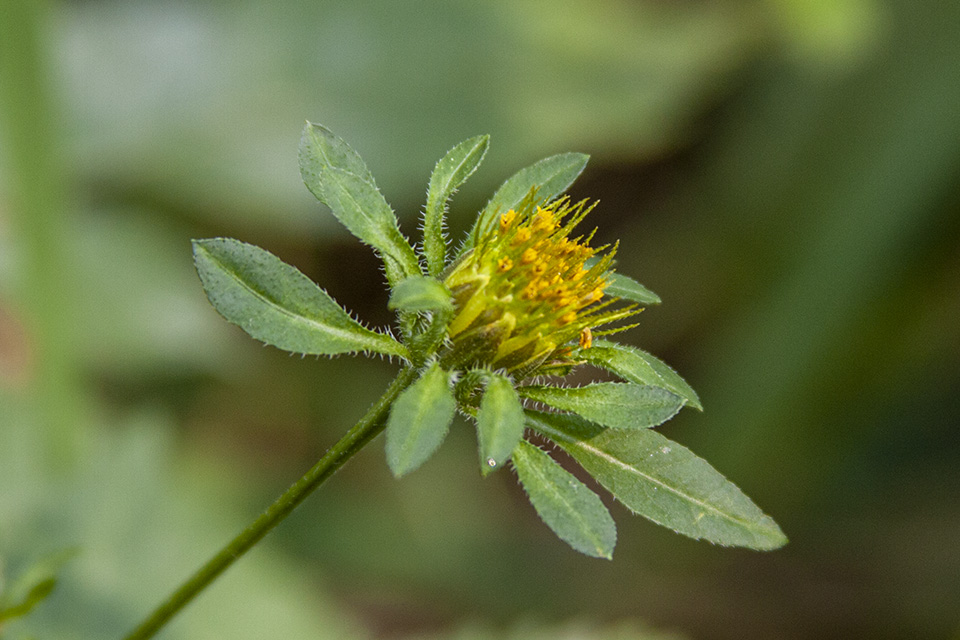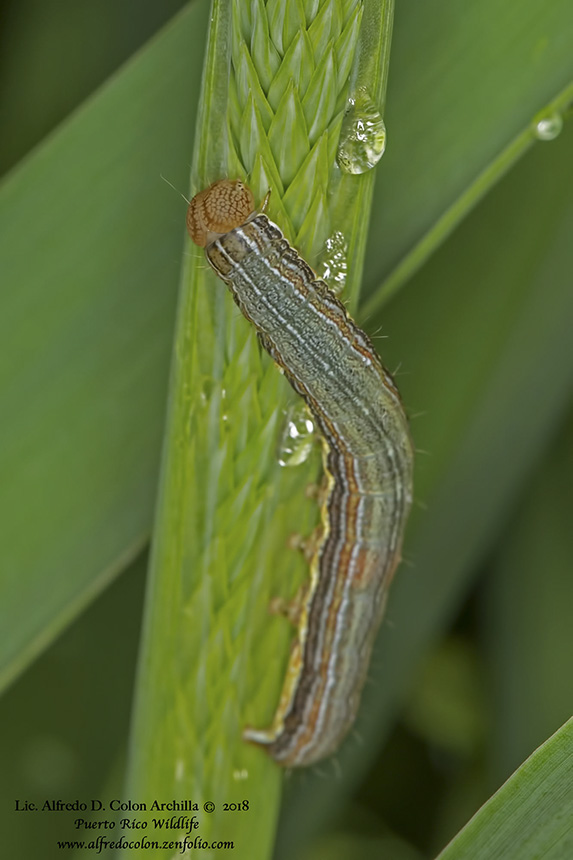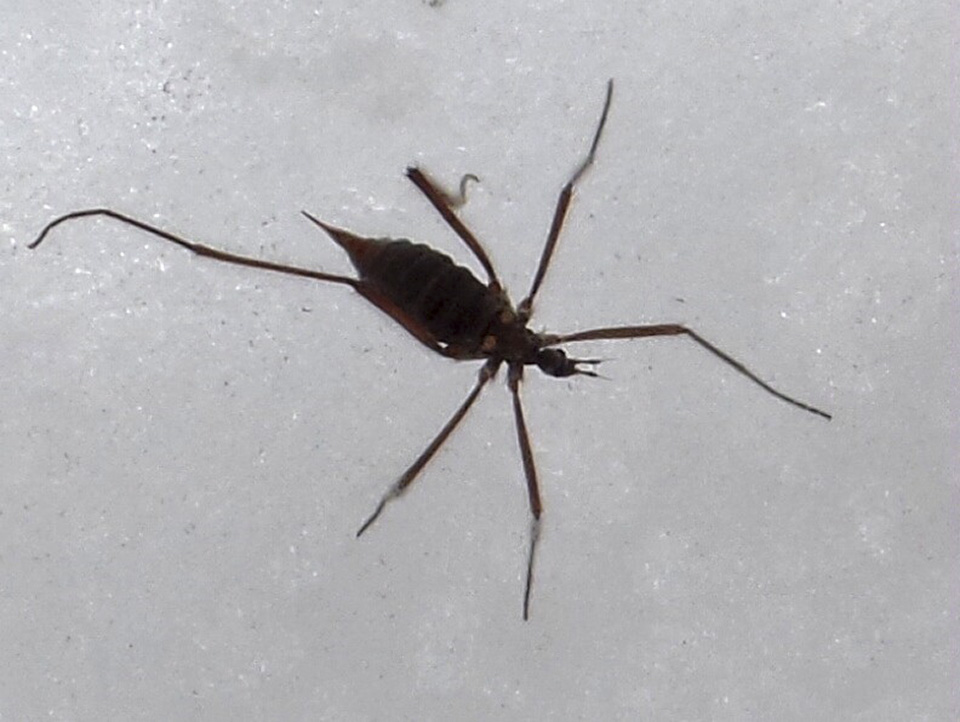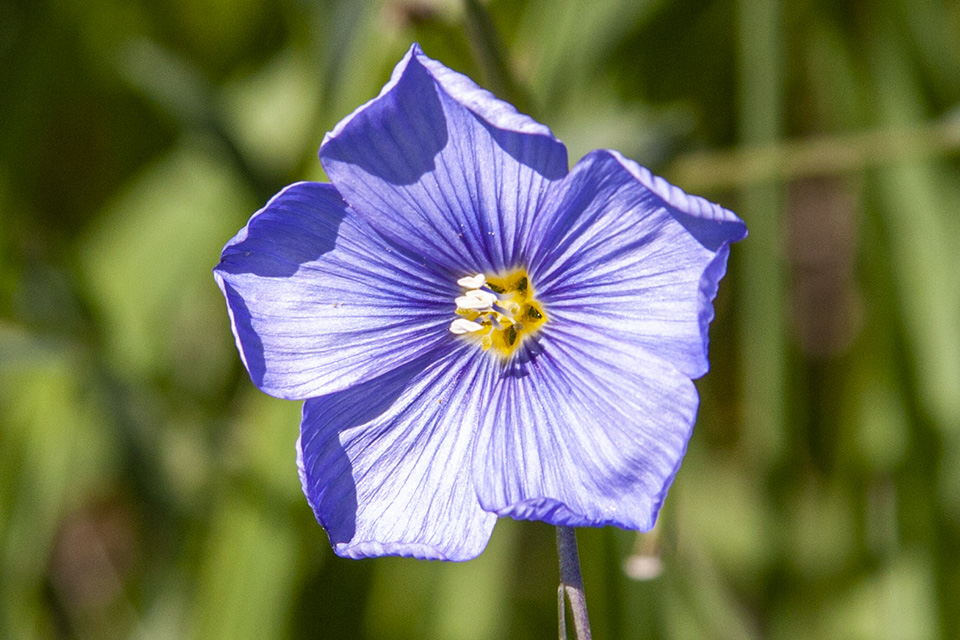
Tall beggarticks (Bidens vulgata) is a common, widespread, native but often weedy wildflower. It is native to Europe and North America. It occurs across the United States but is most common in New England, the upper Midwest, and the Pacific Northwest. It is common in Minnesota. It grows in loamy or silty soil, under full sun to partial shade, in wet to moderately moist sites. It is found on the banks of rivers and streams; on the margins of lakes and ponds; in wet forests and meadows; and in ditches, railroads, roadsides, and other open disturbed sites. It is weedy in moist disturbed sites.
Tall beggarticks is a robust annual with an inconspicuous inflorescence. It is usually 12″ to 20″ tall but in favorable conditions it can reach 60″ or more in height. The leaves are divided onto 3 or 5 leaflets. At the base of each flower head there is a whorl of 10 to 21 modified leaves (bracts). The flower head has up to 150 yellow disk florets and either no ray florets or just 1 to 5 small yellow ray florets.
http://www.minnesotaseasons.com/Plants/tall_beggarticks.html




